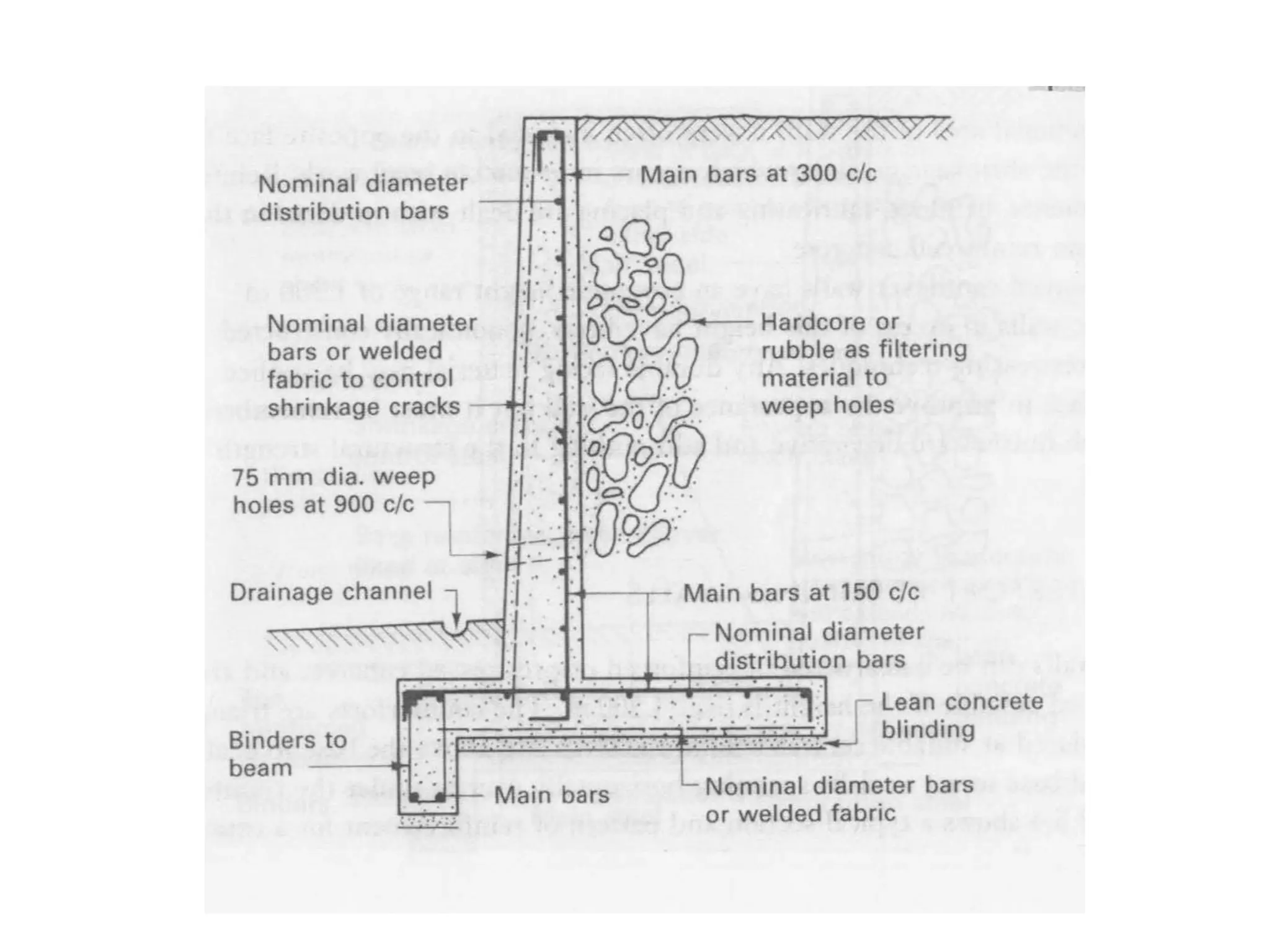Retaining walls have the primary function of retaining soils at an angle greater than the soil's natural angle of repose. There are several types of retaining walls including mass retaining walls, cantilever walls, counterfort retaining walls, and precast concrete retaining walls. Design considerations for retaining walls include preventing overturning, forward sliding, using suitable materials, and not overloading the subsoil.

























